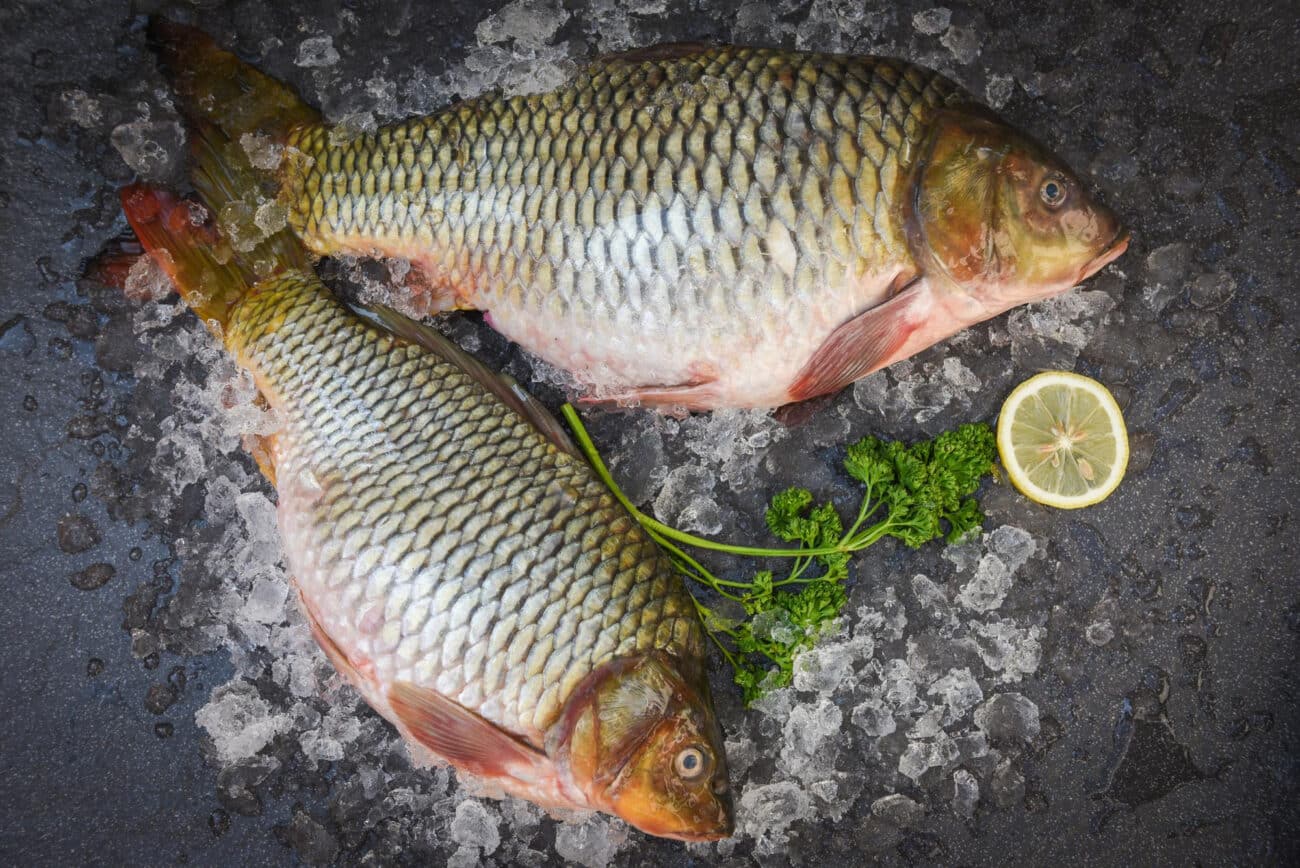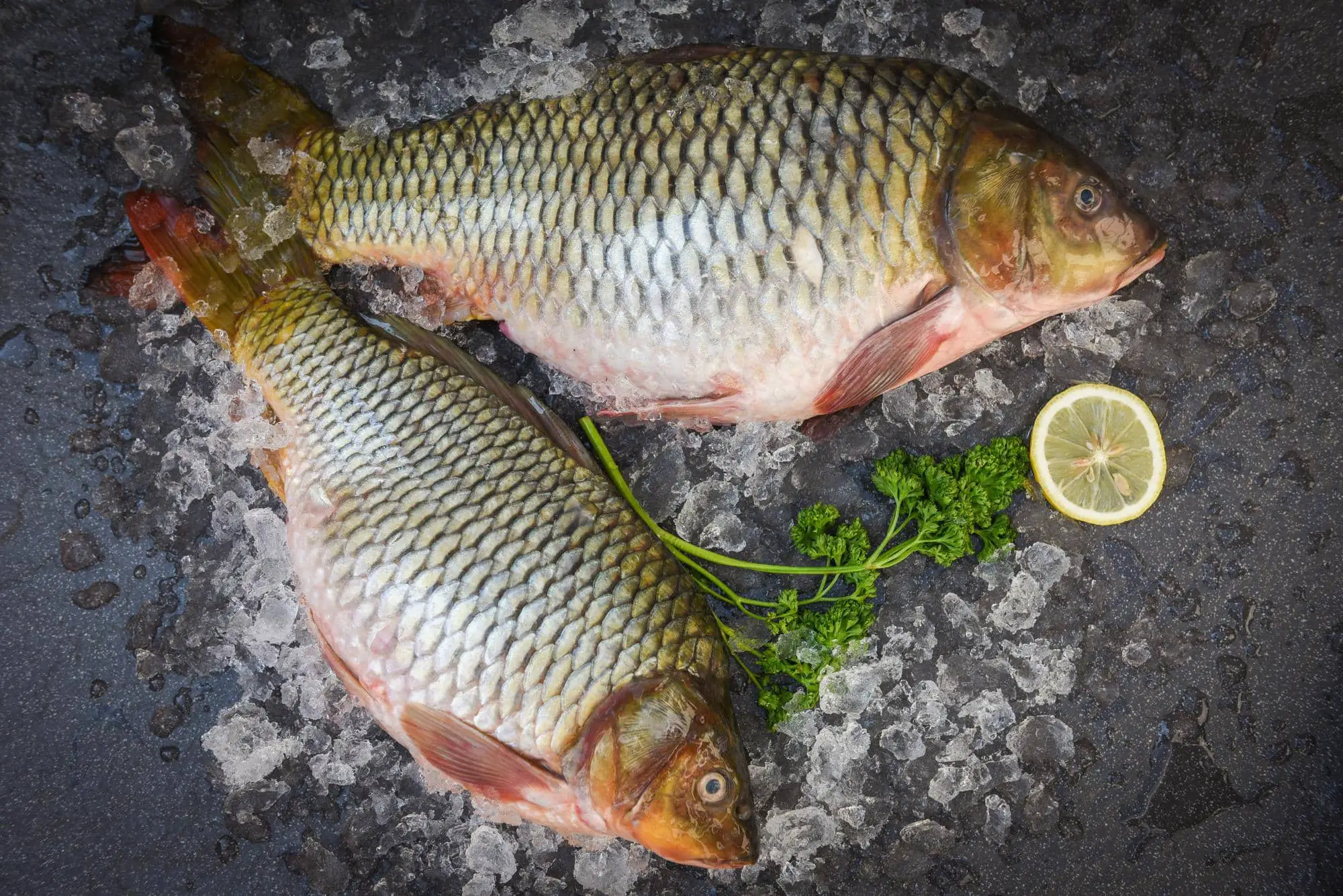This post was last updated on February 11th, 2023 at 04:43 pm
Carp fishing is gaining a lot of popularity in the fly fishing world, and for good reason. Carp are abundant in many waterways, they’re aggressive feeders, and they put up a great fight when caught.
In order to be successful casting flies to feeding carp, you need to use the best bait (aka the best carp flies). One of the most popular lures for carp is actually a fly. There are many different flies that can be used for carp fishing. But, some are much more effective than others.
In addition to explaining the most effective flies, I’ll also instruct you in how to fish them.
Here’s our short list of the top 5 best flies for carp fishing:
- The Woolly Bugger
- The Crazy Charlie
- The Muddler Minnow
- The Pheasant Tail Nymph
- The Zug Bug
In the rest of this article, we’ll discuss the best carp flies for fly fishing and why they work so well. We’ll also provide tips on where to find carp, what they eat, and how to adjust your tactics depending on the environment. So if you’re looking to catch some big carp, read on!

Where to Find Carp
Carp can be found in many different waterways, including ponds, lakes, rivers, and streams. They are a migratory fish and will move around depending on the season and the food supply. In general, they prefer slow-moving water with plenty of cover. This includes weeds, brush piles, and sunken logs, among other things.
Carp will feed in a variety of different areas, including the shallows, the middle depths, and the bottom. They are known to be particularly aggressive when feeding and will even attack baitfish near the surface. If you’re looking to catch carp, it’s important to find a spot where they are likely to be feeding.
Recommended Reading: All About Trout Flies
What Do Carp Eat?
Carp are omnivorous and will eat a variety of different things, including insects, crustaceans, small fish, and plant material. They are particularly fond of carp flies, which is why they are such a popular bait. In order to be successful at carp fishing, you need to know what they’re eating and what flies to use to imitate their natural food.
Insects
Insects are a major component of the carp diet, so many of the best carp flies are designed to mimic them. Some of the most common insects that carp eat include mayflies, caddisflies, stoneflies, and dragonflies. These insects can be found in all sorts of waterways, so it’s a good idea to have a variety of different flies that imitate them.
Crustaceans
Crustaceans are also an important part of the carp diet, and they can be found in many different water types. Crustaceans include shrimp, scuds, sow bugs, and crayfish. Again, it’s a good idea to have a variety of flies that imitate these creatures. Small fish are also a common food source for carp.
Plant Material
Lastly, plant material is an important part of the carp diet, and they will eat a variety of different plants. Some of the most common plants that carp eat include algae, aquatic weeds, and various types of seeds.
How the Environment Affects Carp Fishing
The environment can have a big impact on carp fishing. In general, carp prefer calm water with plenty of cover. However, if the water is too calm, they can become spooked and difficult to catch. Conversely, if the water is too choppy, they may not be able to see your fly.
In addition, the temperature of the water can also affect carp fishing. Carp become much more active in warm water in the 70 degrees F range. You can also expect breeding to occur in water temperatures between about 50-70 degrees F.
Lastly, high traffic, public fishiing areas can be a challenge when carp fishing. Carp are very wary of anglers and can be difficult to catch in these areas. You may have more success in less populated areas or early in the morning/late in the evening when there is less traffic.
Top 5 Best Carp Flies – Carp Fly Patterns to Use
There are a variety of different carp fly patterns that can be used for carp fishing. Some flies are better than others, but it’s important to experiment until you find a pattern that works for you.
The following are a few of the top carp fly patterns that are proven to work:
1. The Woolly Bugger
The Woolly Bugger is a versatile fly that can be used for a variety of different fish. It is especially effective for carp, and it comes in a variety of different colors and sizes.
2. The Crazy Charlie
The Crazy Charlie is another versatile fly that is effective for carp. It is a simple fly pattern that consists of a few basic materials, and it can be tied in a variety of different ways.
3. The Muddler Minnow
The Muddler Minnow is a popular fly pattern for carp. Invented in Minnesota, it’s a large fly that’s designed to resemble a minnow, and it comes in a variety of different colors. It has a weighted cone head and is an altogether unique pattern.
4. . The Pheasant Tail Nymph
The Pheasant Tail Nymph is one of the most popular nymph fly patterns, and it can be super effective for carp. It is a simple fly pattern that can be tied in a variety of different ways.
5. The Zug Bug
The Zug Bug is another popular fly pattern for carp. It is a large fly that is designed to resemble an insect, and it comes in a variety of different colors.
In Conclusion – The Best Flies for Carp Fishing
Carp fishing is a popular pastime for anglers, and it’s easy to see why. Carp are intelligent creatures that make an excellent catch. In this article we’ve covered what carp eat, how the environment affects carp fishing, some of the best flies to use when fly fishing for carp, and more! If you want to learn more about the best gear to catch carp with, check out our fly fishing gear articles.
Here’s a really informative article explaining the techniques of fly fishing for carp more in-depth.
Best Carp Flies FAQs
What are the best flies for grass carp?
Grass carp are a type of carp that eat a lot of vegetation. Size-wise, they also get much larger than common carp. Flies that imitate plant material will be the most effective. Corn flies tend to work very well for gass carp.
Do carp take flies?
Yes, carp will take flies. They are opportunistic feeders, and will eat a variety of different foods. In addition to insects, they will also eat small fish, various plant materials, and other detritus that they can find in the water.

